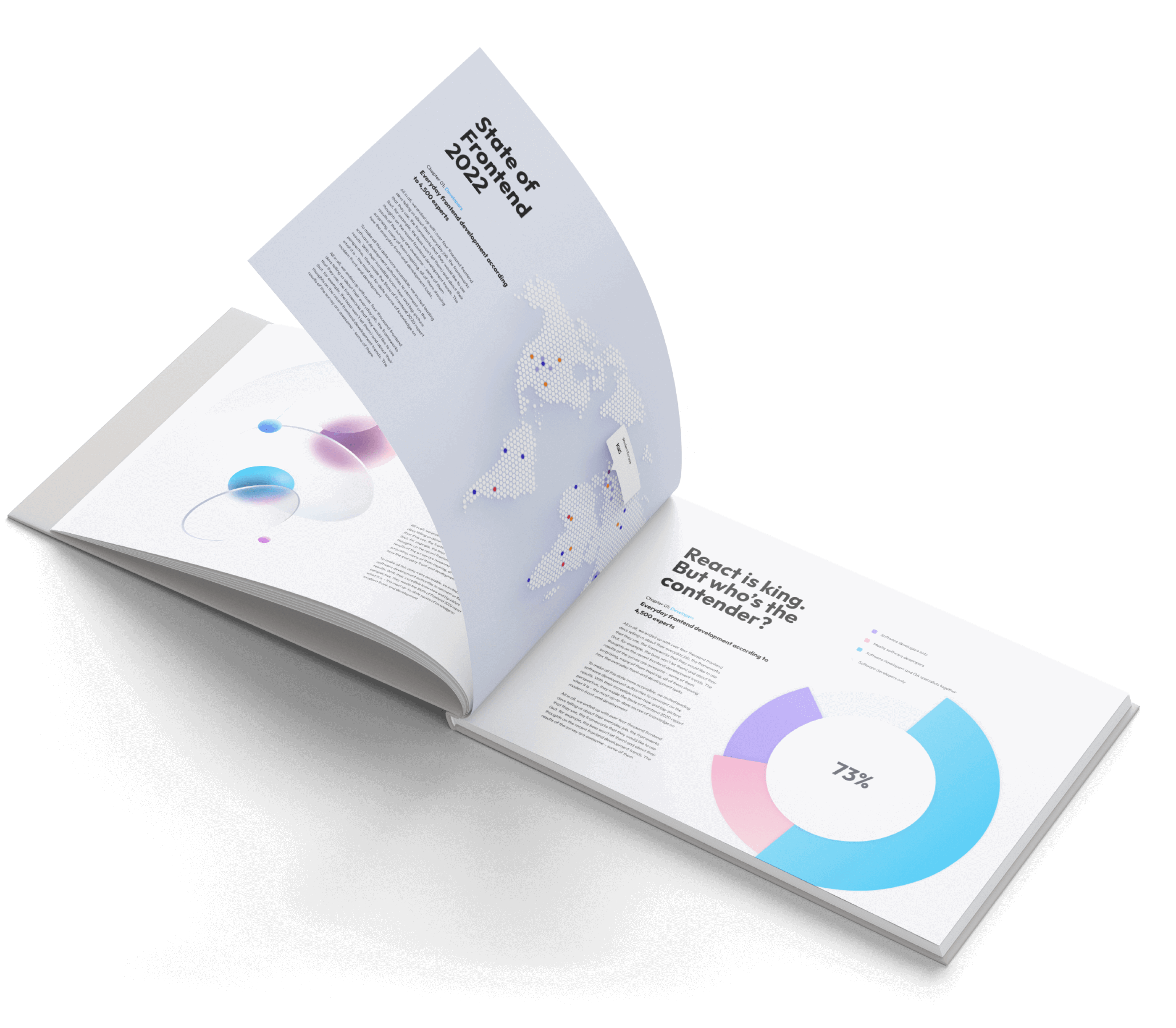How can developers manage media and images in Angular WordPress themes effectively? How can today’s technologies contribute in creating visually stunning and user-friendly themes? What role do media and images play in enhancing the overall aesthetics and functionality of a website? These are the thought-provoking questions that reveal the importance of efficiently managing media and images for Angular WordPress themes.
The main issue is the complexity and difficulty in handling media and images in Angular WordPress Themes which can be overwhelming for developers, particularly beginners. According to sources like Stack Overflow and Smashing Magazine, these complexities often lead to slower website performance, unresponsive designs, and inefficient management of resources[^1^][^2^]. The rationale for proposing a solution is not only to simplify workflow but also to enhance the overall user experience with improved performance and responsive design.
In this article, you will learn about the various techniques and tools that can be utilized to manage media and images effectively in Angular WordPress Themes. We will delve into understanding why it is essential to manage media and images optimally, and how it impacts the user interface and experience.
Expect strategies on how to handle images and other media types within the context of Angular WordPress Themes. Discussion on different practices such as lazy loading images, optimizing media files, and creating responsive images will be included. Moreover, implementation and benefits of these practices will be addressed too.

Understanding Definitions Associated with Managing Media and Images in Angular WordPress Themes
Angular WordPress Themes are design templates for WordPress websites built using Angular, a popular JavaScript framework. These themes allow you to create dynamic, interactive websites.
Managing Media refers to the organization, upload, optimization, and display of multimedia content, like photos, videos or audio files, on your website.
Images in this context are the visual files you upload within your website’s content. The management of these images within Angular WordPress themes includes uploading, positioning, optimizing for best loading times, and maintaining their quality.
These practices are vital when considering web design and functioning as they impact user experience and site performance.
Unlocking the Potential: Efficient Management of Media and Images in Angular WordPress Themes
Embracing Effective Media Management in Angular WordPress Themes
To revolutionize your Angular WordPress Themes, proficient media, and images management is essential. Angular is a robust platform that enables developers to architect sophisticated, resourceful, and scalable applications. WordPress, on the other hand, is a famous publishing platform that prides itself on its user-friendliness and content management. When both are married through themes, it spawns an amazingly dynamic website.
Usually, managing media and images may seem like a no-brainer: you just have to upload it, right? However, if you aspire to rise above mediocrity and truly leverage the full power of Angular WordPress themes, you need to immerse into a paradigm shift. This mindful approach revolves around planning, organizing, manipulating, and optimizing media files and images, with a keen eye on enhancing the performance of your website and catering to a perfect user experience.
Revolutionize via Optimization Techniques
Unoptimized images and media files can significantly affect your site’s performance, causing slow loading times and subpar User experience(UX). However, adopting some ingenious practices can change the game. Optimizing your images before uploading, employing lazy loading practices to render media, and using CDN services, for instance, will not only ameliorate your site’s performance but will also save you significant disk storage.
The optimization process needs careful consideration. It is a delicate juggling act between file size and quality, ensuring images looked crisp and clear without burdening the server. As for other media types like audio and video, they should be hosted externally, except when it’s incredibly needed. Hosting videos and audios can consume huge bandwidth, leading to slow loading times and a poor UX.
- Plan before uploading – Comprehend what your media files will be, their roles, and how they will be managed
- Optimizing media files – Implementing image compressing algorithms and tools to decrease the size without compromising quality. For audios and videos, use external hosting services.
- Implement Lazy-loading: This technique allows the page to be rendered fast with images and other media files loaded when they come into the viewport.
- CDN services: Content Delivery Network (CDN) is a group of servers distributed geographically, working together to provide fast delivery of Internet content.
In the long run, robust media, and images management will not just accelerate your website’s loading speed but also elevate the overall user experience – crucial parameters that determine the popularity and ranking of your website. Therefore, stepping up your game in management and optimization of media files and images in Angular WordPress Themes is not just a choice, but a business requirement in today’s digital era.
Harnessing Angular WordPress Themes: Streamlining Media and Image Processes for Elevated User Experience
Why Aren’t We Harnessing the Full Potential of Media in Angular WordPress Themes?
The digital world we inhabit is saturated with media- diverse, dynamic and perpetually evolving. Yet, when it comes to angular WordPress themes, it seems we are barely scratching the surface of its vast potential. This glaring discrepancy is not due to any inherent limitation of the platform, nor is it due to the scarcity of resources at our disposal. The downfall, it appears, lies with our approach and lack of knowledge. For instance, many developers are unaware that Angular, a platform that builds applications efficiently, natively integrates with WordPress, a powerful CMS renowned for its media-handling prowess. Overlooking this potent combination is like leaving a goldmine unexplored. The question then arises, how do we harness the untapped power of media and streamline our Angular WordPress themes?
The Conundrum of Managing Images and Media
Navigating the waters of media management in Angular WordPress themes can be daunting, especially for newcomers. The process involves numerous considerations which, without proper guidance, often culminate in an ineptly handled and inefficient system. The crux of the issue lies in the misalignment between the extensive media capabilities of WordPress and the underused, often ignored, media-specific features inherent in Angular. This misalignment not only leads to wasted potential but also creates a hindrance in crafting seamless, engaging, and interactive user experiences. It’s like having a top-of-the-line sports car but failing to make use of its advanced features to cater to your specific needs.
Unlocking the Undiscovered: Best Practices in Angular WordPress Themes
Bracketing the complexities, why not explore a few successful instances of integrating media and angular WordPress themes for a clearer perspective? Let’s consider Angular’s directive ng-src. Developers use this nifty tool to alter image sources dynamically; a feature that pairs well with WordPress’s customising and resizing images functionality. To streamline the workflow of inserting images into posts and customising those images, Angular’s ng-src can efficiently work in tandem with WordPress’ add_theme_support( ‘post-thumbnails’ ). Another excellent practice is integrating WordPress’s responsive embeds feature with Angular’s ng-iframe. When combined, these resources can create a captivating and responsive media presentation on any device. By thoughtfully incorporating such best practices, managing media and images in Angular WordPress themes can be dramatically improved from a tedious chore into an effortless and efficient process.
Redefining Design Standards: Integrating Media and Images into Angular WordPress Themes for Superior Aesthetics
Revolutionizing Aesthetics through Angular WordPress Themes
Ever wondered about the potential impact of skillfully integrating images and media into WordPress themes? Angular, which is renowned for its flexibility and high performance, has gained immense popularity among WordPress developers. With its cohesive blend of HTML templates and expressiveness, the framework can transform the overall aesthetics and functionality of WordPress themes. The crux of this innovative approach lies in redefining design standards, which are primarily focused on the presentation of images and media – elements that greatly influence user engagement rates on websites.
The Quest for Superior Visual Appeal
However, the road to achieving superior visual appeal is not always smooth. The key challenge that developers face involves giving the themes a unique, aesthetic appeal without hindering the site’s performance. In many cases, the unstructured incorporation of media and images can lead to slower load times, diminished UX, and reduced SEO ranking. This problem stems from traditional practices which treat theme design as a static component, failing to account for various factors like loading times, user experience, and browser compatibility. The key lies in incorporating a dynamic, responsive design that boosts the website’s aesthetics and overall performance, fostering enhanced user experiences.
Best Practices in Theme Integration
Successful examples of effective media and image integration can be found in Angular WordPress themes such as ‘BuilderPress’ and ‘Napoli’. These themes exemplify best practices in action. For instance, BuilderPress uses a grid system to organize media files – an approach which accounts for superior user experiences across devices. Similarly, Napoli presents images using a lightbox, ensuring faster load times and better SEO rankings while producing visually stunning layouts. Moreover, these themes are marked by a seamless user interface and excellent navigation features, facilitating improved user engagement. Thus, integrating media and images into Angular WordPress themes in a strategic, thoughtful manner can indeed create superior aesthetics while enhancing the user’s experience.
Conclusion
Isn’t it intriguing how technological intricacies can allow us to seamlessly manage media and images in Angular WordPress themes? How a right blend of AngularJS and WordPress can result in an efficient and powerful web development tool? As we unravelled in the course of this article, the integration of media and images is no longer a daunting challenge for developers. It is empowering how a few intricate codes can drastically enhance the user-experience by making your website interactive and visually pleasing. With AngularJS’s MVC architecture, manipulating WordPress themes has redefined both front-end and back-end operations.
We encourage our avid readers to stay attached to our blog. We promise to keep unveiling the mysteries of web development technologies and their pragmatic applications. As we journey through the dynamic world of web development, there would be intriguing narratives, handy tutorials and informative articles coming up to keep you proficiently updated. Waiting for new releases could build up anticipation, but we assure you that every piece of content would be worth your while.
In the end, remember that managing and controlling media and images in Angular WordPress themes can make or break the user experience. This is why it is essential to continuously acquire knowledge and explore potential improvements in this area. New releases of themes and modules, expected to be even more advanced, can give us more efficient ways of making your website visually stunning and user-friendly. So, let’s anticipate future innovations and continue learning to be on top of the tech game.
F.A.Q.
You can manage media and images in Angular WordPress themes through the WordPress Media Library, which lets you upload, store, and edit your media content. Implementing angular directives in your WordPress theme allows you to bind that media to your HTML elements efficiently.
Yes, you can edit image properties like alt text, dimensions, and alignment in your Angular WordPress Themes. This can be done either directly through the WordPress Media Library or with the help of certain coding techniques in Angular.
You can link images with posts or pages by embedding the media file within the post editor or by using Angular’s property binding to bind the image source to a property in your component class. It is a seamless and efficient process.
Definitely, WordPress Media Library allows you to organize your images and other media content into folders or categories. Moreover, Angular’s modular approach supports a well-structured and organized code base, making image management easier.
Yes, there are several WordPress plugins available, such as Real Media Library, Media File Renamer, or Imsanity which can help manage images in Angular WordPress themes. These plugins offer functions such as resizing, renaming, organizing, and optimizing your images.


